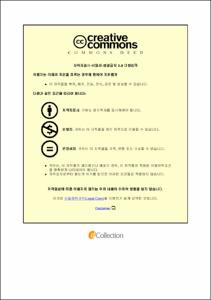금속 폼 압축이 고분자전해질 연료전지의 성능에 미치는 영향
- Abstract
- Among several types of fuel cells that do not emit greenhouse gas, polymer electrolyte membrane fuel cell (PEMFC) has attracted attention because it has high power density and operates at relatively low temperature of 100 °C or less. The flow distributor should transfer efficiently the reaction fluid to electrode region of fuel cell. Conventional bipolar plate manufactured in the form of ‘channels/lip’ design have disadvantages such as non-uniform fuel distribution and mechanical pressure difference. Therefore, numerous research has conducted to find optimal reactant distribution devices. Metal foam has drawn attention as a replacement for conventional fuel cell flow distributor because of possible uniform fuel distribution and light weight when applied to fuel cell.
The metal foam could be manufactured in various thicknesses but should be applied with thin thickness of 1 mm or less in consideration of fuel cell stack applicability. However, most studies do not consider the effect of metal foam compression on fuel cell performance. Therefore, the effect of metal foam compression ratio on fuel cell performance was conducted in this experiment. Mass transfer resistance was reduced significantly, and voltage loss was minimized in high current density region with high compression ratio metal foam. In addition, the effect of applied gas pressure on internal flow path with conventional serpentine flow field was analyzed. The voltage loss of pressurized serpentine flow field was small in medium current density, but it was increased in high current density region due to the limit of flow pattern shape. The location of air particles tracking over time was conducted with computational fluid dynamics. The mass transfer resistance of copper foam was lower than that of conventional serpentine structure, and it took 62% faster time to escape 50% air particles with copper foam.|온실 가스를 배출하지 않는 친환경 에너지원인 여러 종류의 연료전지 중에서, 고분자전해질 연료전지(PEMFC)는 높은 전력 밀도와 섭씨 100도 이하의 비교적 낮은 온도에서 작동하는 이점으로 주목받고 있다. 고분자전해질 연료전지의 구성 요소 중에서 유로 분리판은 반응 유체를 전극 면적에 효율적으로 전달해야 한다. 정형화된 기존의 채널/립 형태로 제작된 분리판은 균일하지 않은 연료 분포와 재료에 가해지는 기계적 압력 차이의 단점이 제시되어 왔으며, 이를 극복하고 최적의 반응물 분배 장치를 찾으려는 연구가 진행되고 있다. 그 중에서 금속 폼은 연료전지에 적용되었을 때, 균일한 연료 분포가 가능하고 가볍다는 장점 때문에 기존 연료전지 분리판의 대체제로 주목받는다.
금속 폼은 다양한 두께로 제작되며 연료전지의 스택 적용성을 고려할 때, 1 mm 이하의 얇은 두께로 연료전지에 적용해야 한다. 단, 대부분의 연구에서 금속 폼 압축이 연료전지의 성능에 미치는 영향을 고려하지 않고 있다. 이에 본 연구에서는 금속 폼 압축 비율이 성능에 미치는 영향에 대한 실험을 수행하였다. 높은 압축 비율의 금속 폼은 물질 전달 저항을 크게 감소시켜, 고전류밀도에서의 전압 손실을 최소화할 수 있었다. 또한 금속 폼의 형상에 의해 내부 유로에 걸리는 가스 압력의 영향을 분석하였다. 가압 조건의 사형 구조는 중전류밀도까지는 전압 손실이 금속 폼과 큰 차이가 없이 낮았으나, 유로 형상의 한계로 인해 고전류밀도에서는 가압 하에서도 전압 손실이 컸다. 전산 유체해석을 통하여 유로 입자의 시간에 따른 위치 추적을 수행하였다. 기존 사형 구조에 비해 구리 폼의 물질 전달 저항이 더 낮았으며, 입자의 50%가 탈출하는데 걸리는 시간이 구리 폼에서 62% 더 빨랐다.
- Issued Date
- 2022
- Awarded Date
- 2022-08
- Type
- dissertation
- Alternative Author(s)
- Seong Hun Jo
- Affiliation
- 울산대학교
- Department
- 일반대학원 화학공학전공
- Advisor
- 김준범
- Degree
- Master
- Publisher
- 울산대학교 일반대학원 화학공학전공
- Language
- kor
- Rights
- 울산대학교 논문은 저작권에 의해 보호 받습니다.
- Appears in Collections:
- Chemical Engineering > 1. Theses (Master)
- 파일 목록
-
-
Download
 200000629117.pdf
기타 데이터 / 1.91 MB / Adobe PDF
200000629117.pdf
기타 데이터 / 1.91 MB / Adobe PDF
-
Items in Repository are protected by copyright, with all rights reserved, unless otherwise indicated.